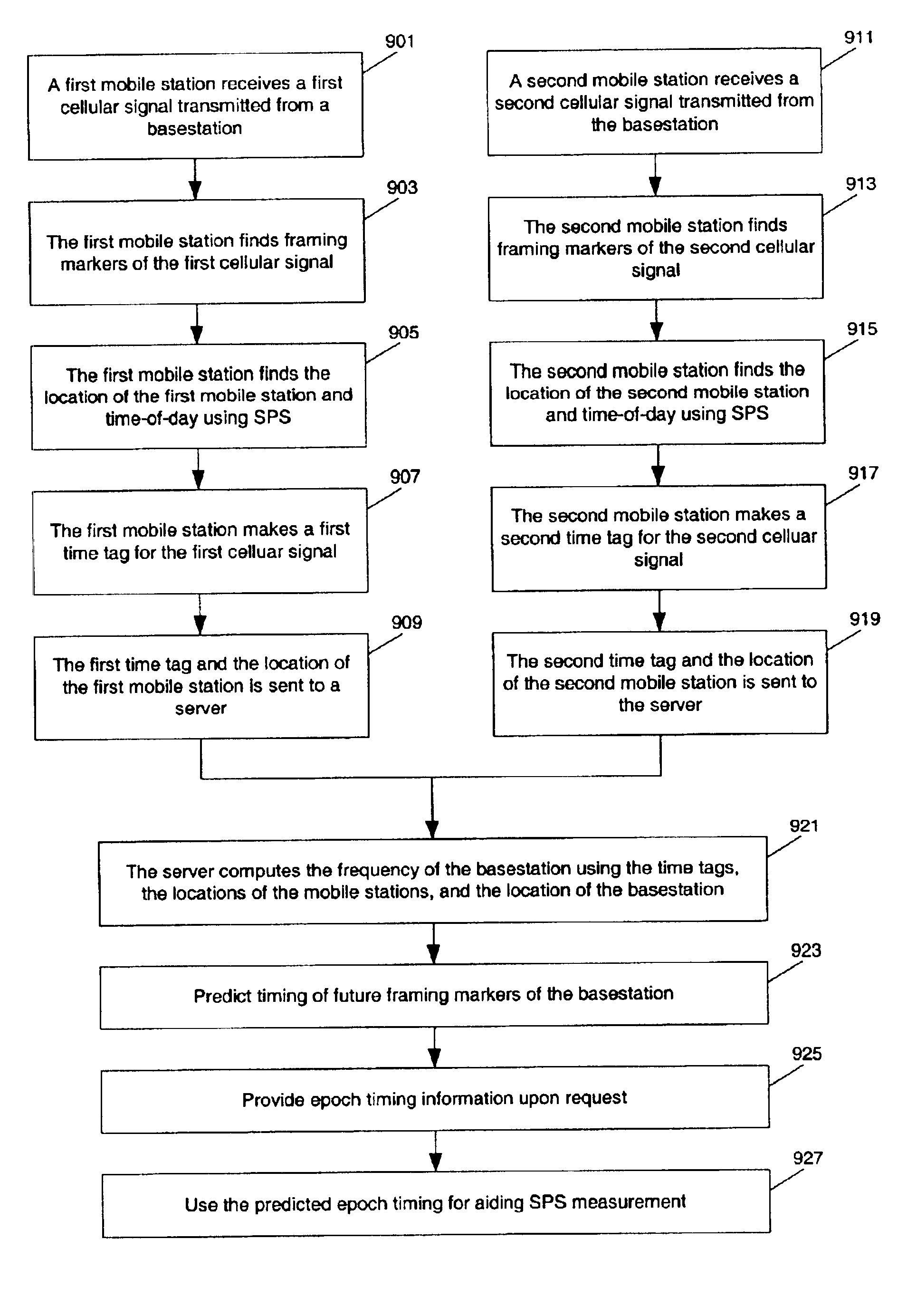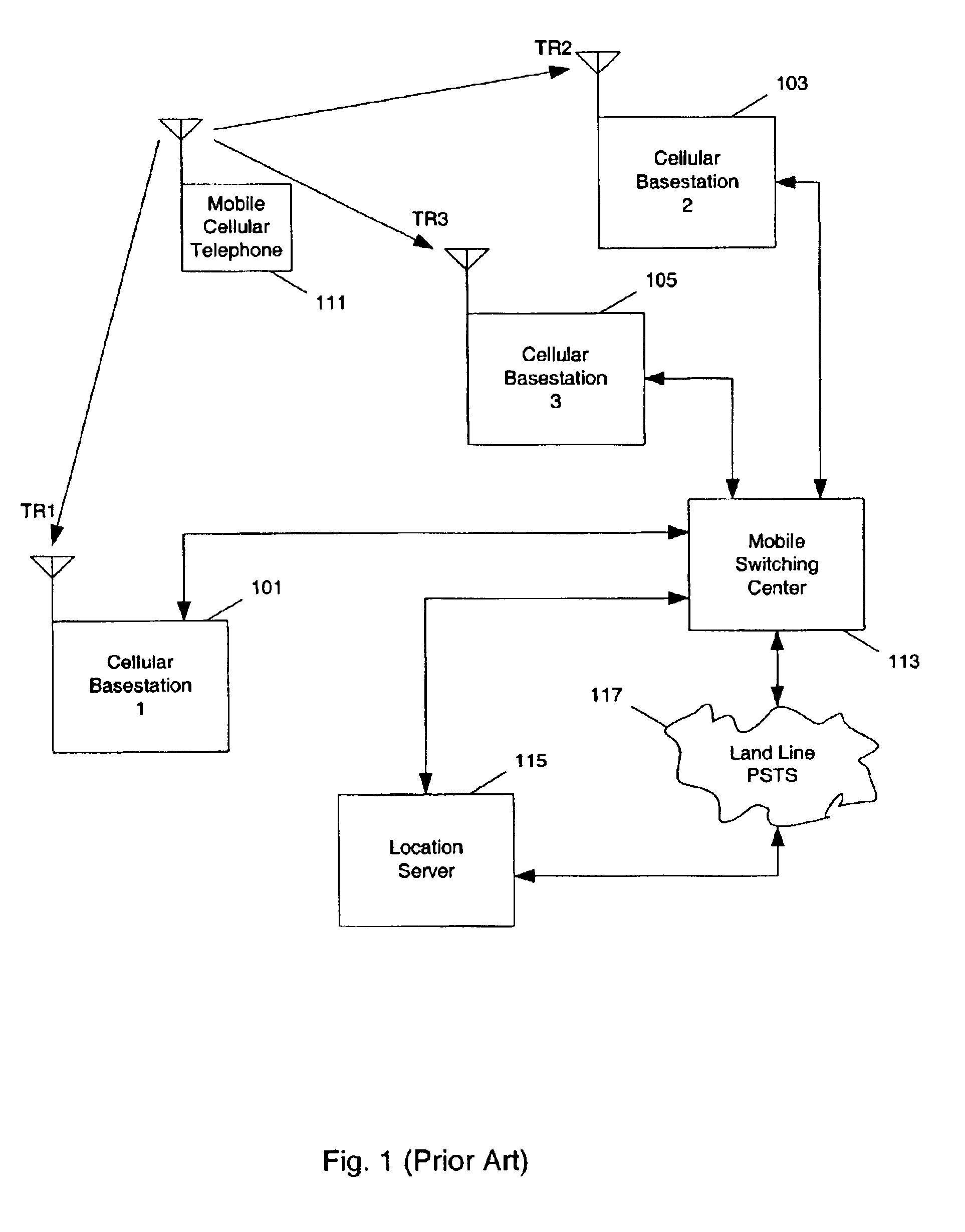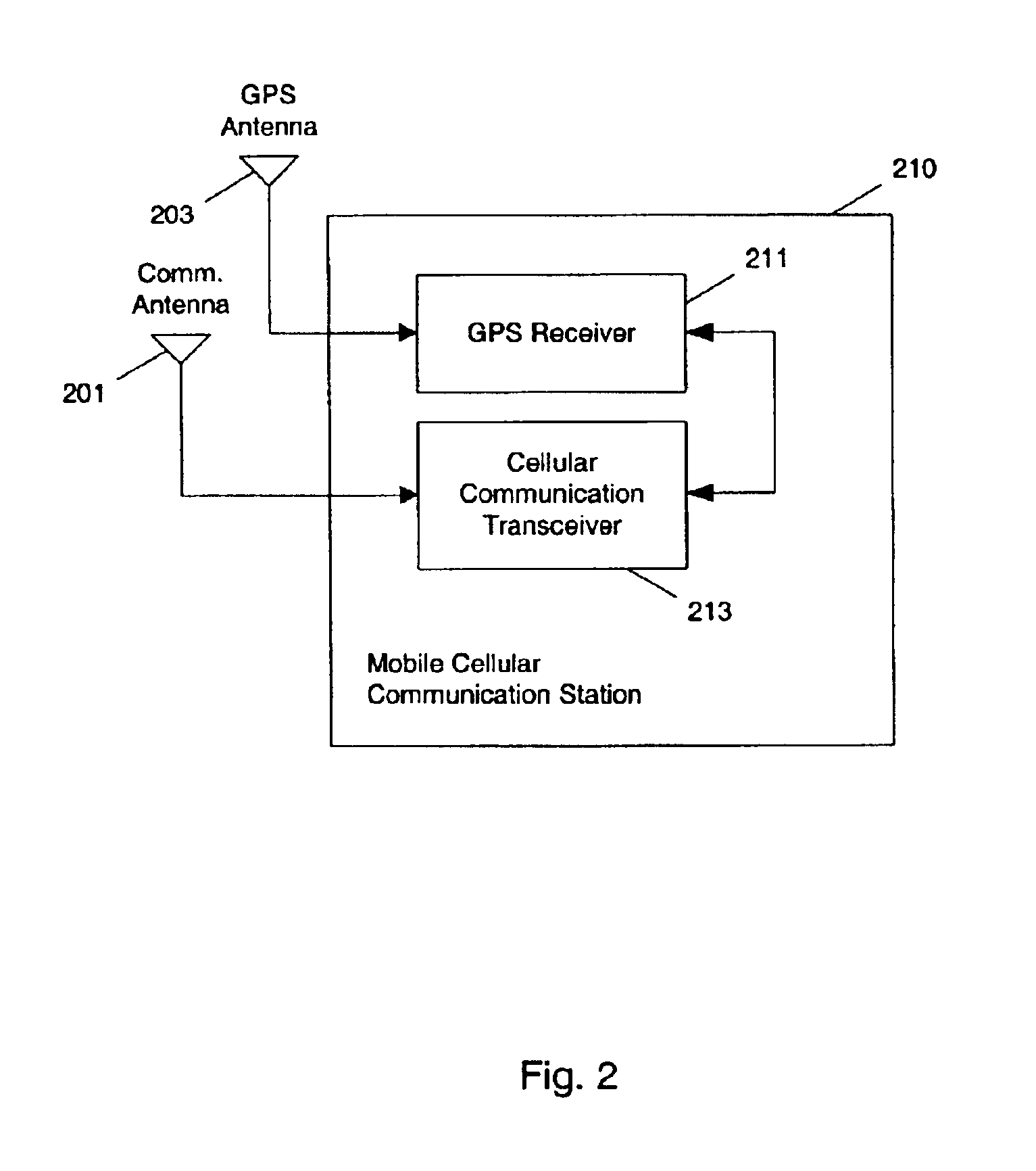Methods and apparatuses for measuring frequencies of basestations in cellular networks using mobile GPS receivers
a technology of mobile gps receiver and basestation, which is applied in the field of cellular communication systems, can solve the problems of not being able to perform round trip timing measurements at all, and not being able to perform accurate (e.g. microsecond) round trip timing measurements
- Summary
- Abstract
- Description
- Claims
- Application Information
AI Technical Summary
Problems solved by technology
Method used
Image
Examples
Embodiment Construction
[0032]The following description and drawings are illustrative of the invention and are not to be construed as limiting the invention. Numerous specific details are described to provide a thorough understanding of the present invention. However, in certain instances, well known or conventional details are not described in order to avoid obscuring the description of the present invention.
[0033]In most digital cellular systems, numbered framing markers are transmitted as part of the cellular system transmissions. In a network such as GSM, the time-of-day information from a GPS receiver may be used to time tag the framing structure (e.g., framing markers) of the received communication (e.g., GSM) signal. For example, the start of a particular GSM frame boundary, which occurs every 4.6 milliseconds, may be used (see FIG. 7). There are 2,715,648 such frames per hyperframe, which last 3.48 hours; hence each such frame boundary is unambiguous for all practical purposes. Co-pending U.S. pate...
PUM
 Login to View More
Login to View More Abstract
Description
Claims
Application Information
 Login to View More
Login to View More - R&D
- Intellectual Property
- Life Sciences
- Materials
- Tech Scout
- Unparalleled Data Quality
- Higher Quality Content
- 60% Fewer Hallucinations
Browse by: Latest US Patents, China's latest patents, Technical Efficacy Thesaurus, Application Domain, Technology Topic, Popular Technical Reports.
© 2025 PatSnap. All rights reserved.Legal|Privacy policy|Modern Slavery Act Transparency Statement|Sitemap|About US| Contact US: help@patsnap.com



